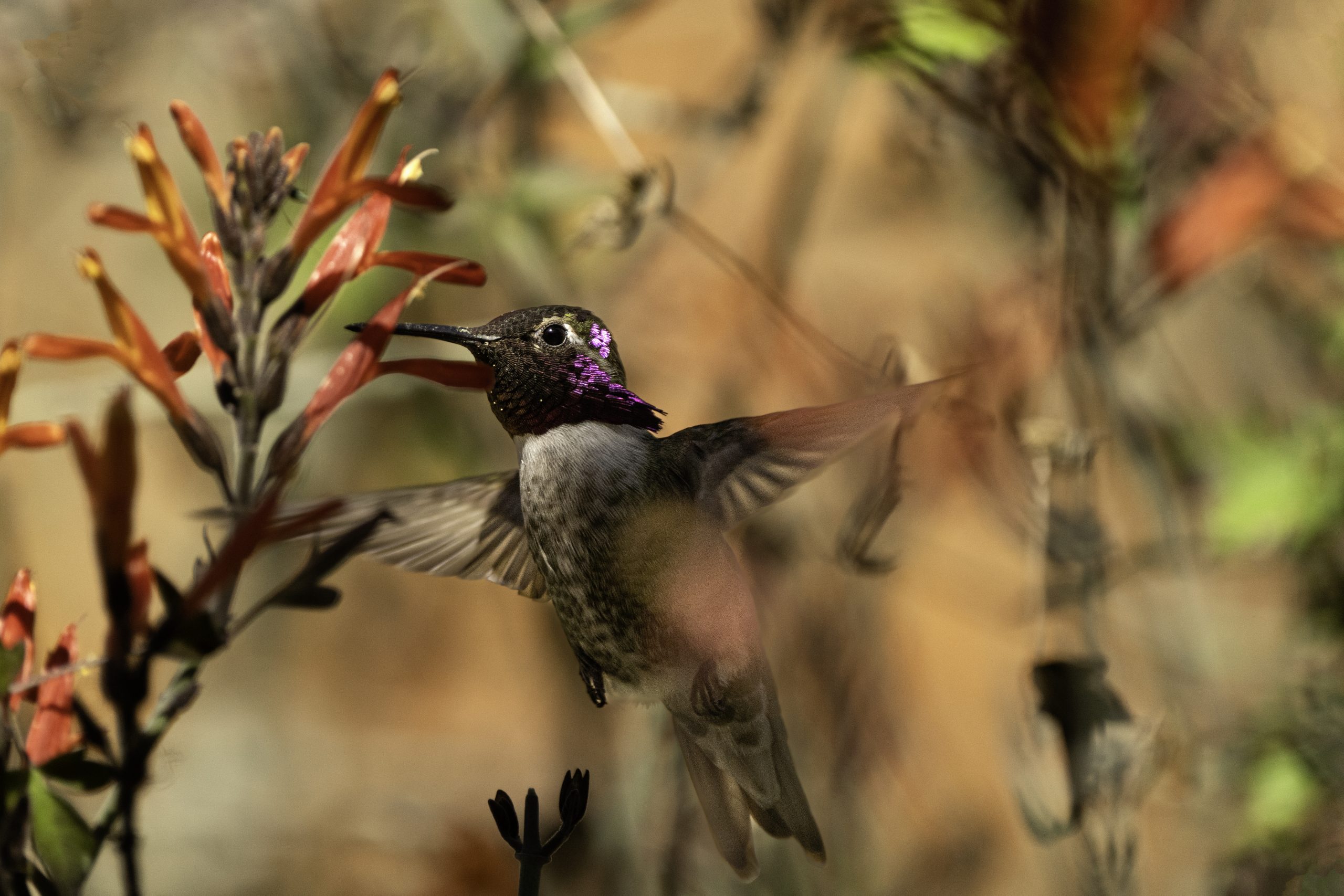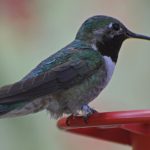Costa’s hummingbird (Calypte costae) is a captivating member of the hummingbird family, Trochilidae. Noteworthy for its vibrant appearance and energetic behavior, this small bird thrives in the arid regions of the southwestern United States, including Arizona and northwestern Mexico. During winter, it migrates to western Mexico.
Subspecies Details
Costa’s hummingbird was formally described by Jules Bourcier in 1839 under the binomial name Ornismya costae. The epithet “costae” honors Louis Marie Pantaleon Costa, Marquis de Beauregard. The type locality is Magdalena Bay on Baja California Sur’s western coast. Currently placed in the genus Calypte, introduced by John Gould in 1856, it remains monotypic with no subspecies recognized, but known hybrids with Anna’s hummingbirds, among others, exist.
Size and Dimensions
A mature Costa’s hummingbird measures 3 to 3.5 inches long with an 11 cm wingspan. Males typically weigh around 3.05 grams, while females average slightly more at 3.22 grams.
Appearance and Features
The male Costa’s hummingbird boasts a striking green back and flanks complemented by a small black tail and wings. Its most distinctive feature is the brilliant purple cap and throat feathers extending behind its head. Females are less vibrant, with grayish-green upper parts and a white underbelly.
Habitat: Where It Lives
This species is commonly found in Arizona’s deserts and other arid brushy regions across the Southwestern United States and the Baja California Peninsula of Mexico.
Preferred Landscape
Costa’s hummingbirds thrive in desert environments filled with brushy vegetation, such as yucca plants, where they often nest.
Diet and Eating Habits
Like other hummingbirds, Costa’s feeds primarily on flower nectar supplemented by small insects for protein intake. They exhibit remarkable agility while feeding mid-flight through hovering techniques.
Breeding Behavior
Male Costa’s engage in elaborate courtship displays involving swoops, dives, and high-speed passes near perched females while showcasing their violet gorgets under sunlight angles for maximum effect. Females build cup-shaped nests from plant fibers bound with spider silk on yucca stalks or tree limbs, where they lay two white eggs that hatch after about 15-18 days; fledglings leave the nest within approximately three weeks post-hatching.
Migration Patterns
While breeding occurs predominantly within Arizona’s deserts among other southwestern regions during springtime through summer months, these birds migrate southwards towards western Mexico for wintering periods, ensuring survival against colder climates up north.
Conservation Status
According to IUCN assessments, Costa’s Hummingbirds are categorized under ‘Least Concern’ due to their largely stable populations without significant threats. However, continued habitat monitoring remains essential amidst ongoing environmental changes impacting broader ecosystems housing these exquisite avian inhabitants.


